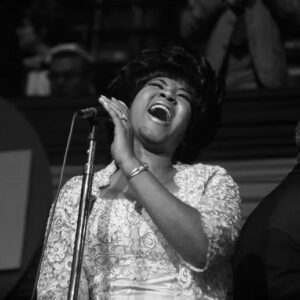Michael Jackson, the “King of Pop,” was already a well-known figure in the world of music by 1982. But it was in that year that he became a global phenomenon, forever cementing his place in the annals of music history. A combination of groundbreaking music, game-changing videos, and iconic performances elevated Jackson to new heights, making 1982 a transformative moment not only for his career but for the cultural landscape of the time. It was the year Michael Jackson released Thriller, the album that would redefine the music industry and mark the beginning of his reign as the undisputed King of Pop.
In this article, we will explore the key moments from 1982 that contributed to Jackson’s meteoric rise and his enduring legacy. From the release of Thriller and its iconic music videos to the record-breaking success that followed, we will see how Jackson became not just a pop star, but a global cultural icon whose influence transcended music and crossed cultural boundaries.
The Release of Thriller (November 1982)
The moment that changed everything for Michael Jackson was the release of his sixth studio album, Thriller, in November 1982. At the time, Jackson was already an established solo artist, having enjoyed success with his previous album, Off the Wall (1979). But Thriller would take him to heights that no one could have predicted.
Produced by the legendary Quincy Jones, Thriller was an ambitious project that blended genres in a way that had never been done before. Pop, rock, R&B, and funk came together to create a sound that was both eclectic and universally appealing. The album opened with the infectious, infectious “Wanna Be Startin’ Somethin’,” then veered into pop perfection with “The Girl Is Mine,” a duet with Paul McCartney, followed by “Thriller,” the title track, which featured a spooky, cinematic atmosphere that became as iconic as the song itself.
The album was not just a collection of great songs; it was a groundbreaking work in terms of production, arrangement, and artistry. It appealed to a wide range of audiences and broke down musical boundaries. For pop music, it was a leap into the future; for rock, it was a thrilling new twist on the genre; for R&B, it was an evolution that blended old-school grooves with futuristic soundscapes.
At its core, Thriller captured the essence of Michael Jackson as an artist: innovative, visionary, and deeply in touch with the zeitgeist of the moment. The album was packed with chart-topping hits, including the unforgettable “Billie Jean,” the soulful “Human Nature,” the hard-hitting “Beat It,” and the haunting title track “Thriller.” It was clear from the outset that Jackson was not just another pop star—he was an artist pushing the boundaries of what was possible in popular music.
The Iconic Thriller Music Video
While the music itself was revolutionary, the Thriller album also gave birth to one of the most iconic music videos of all time. Directed by John Landis, the music video for “Thriller” was released in December 1983 and was a game-changer in the music industry. It marked the beginning of the era of the music video as a serious art form.
At 13 minutes long, the video was more akin to a short film than a traditional music video. Its high production value, cinematic style, and gripping narrative made it an instant classic. The video opened with a playful yet suspenseful dialogue scene between Jackson and actress Ola Ray, before transitioning into a full-blown horror-themed performance, complete with zombie choreography. The image of Jackson leading a legion of the undead in perfect sync became one of the most enduring pop culture moments in history.
The “Thriller” video did more than just promote the song; it became an event in itself. It was a visual spectacle that turned the music video into a medium for storytelling and performance art. Jackson’s commitment to blending music with visual imagery helped set the stage for the music video era, where artists would increasingly use videos as an integral part of their artistic identity. In fact, Thriller helped to establish MTV as a cultural force, and the video itself became a defining moment in both Jackson’s career and the evolution of the medium.
The choreography in the “Thriller” video was also groundbreaking. The zombie dance, now legendary, became one of the most recognizable routines in the world. Jackson’s precise, synchronized movements were nothing short of mesmerizing, and they showcased his unparalleled ability as a performer. The impact of the “Thriller” video cannot be overstated: it turned the music video into an art form in its own right and forever linked Jackson’s name with innovation and creativity.
Unmatched Commercial Success
While the music and videos were groundbreaking, the commercial success of Thriller was simply unprecedented. The album became the best-selling album of all time, a title it still holds today, more than 40 years after its release. By the end of 1982, Thriller was already breaking records, but its success only grew in the following years. It eventually sold over 66 million copies worldwide and was certified 34-times platinum in the United States alone.
Not only did the album sell millions of copies, but its singles also dominated the charts. The release of “Billie Jean,” “Beat It,” and “Wanna Be Startin’ Somethin’” kept Jackson at the forefront of popular music for years to come. Each song became a hit in its own right, contributing to the album’s continued success. “Billie Jean” became one of Jackson’s signature songs, with its unforgettable bassline and infectious beat, while “Beat It” brought rock music into the pop fold, with a legendary guitar solo from Eddie Van Halen that blended perfectly with Jackson’s smooth vocals.
But it wasn’t just the singles that dominated; Jackson’s music also found its way into mainstream culture in other ways. His songs were everywhere—from radio airplay to television commercials, from concerts to dance floors. Michael Jackson was omnipresent, and Thriller was the soundtrack to a generation. Even more impressive was the fact that Jackson’s success was global, with Thriller finding an audience in every corner of the world.
Jackson’s ability to cross cultural and musical boundaries was something truly remarkable. The success of Thriller wasn’t just about album sales; it was about breaking down the walls that had traditionally separated different musical genres and racial demographics. Michael Jackson was the artist who made it possible for a black artist to dominate mainstream pop culture, and his success was proof that music could unite people across different backgrounds.
Crossing Racial Boundaries
One of the most significant aspects of Michael Jackson’s rise to fame in 1982 was his ability to break down racial barriers, particularly on MTV. At the time, MTV, which had launched in 1981, had been criticized for its lack of diversity. The network was predominantly featuring white rock artists, and there was a pervasive notion that African American artists didn’t have a place on the channel. But with the release of Thriller and the groundbreaking music videos for “Billie Jean” and “Beat It,” Jackson changed all that.
MTV, which had been hesitant to air videos by African American artists, quickly found that Jackson’s music videos were generating unprecedented demand. “Billie Jean” was one of the first videos by a black artist to receive heavy rotation on the network, and it wasn’t long before other African American artists began to receive the same treatment. Jackson’s success paved the way for a new generation of African American artists to be embraced by mainstream pop culture, and he became a symbol of racial integration and musical diversity.
Jackson’s impact on MTV was so profound that it became a turning point in the network’s history. By 1983, MTV was no longer just a platform for white rock bands—it had become a space where black artists could thrive. Jackson’s success was, in many ways, the catalyst that forced the music industry to acknowledge the cultural power of black artists and their role in shaping mainstream music.
The Moonwalk Premiere (Motown 25: Yesterday, Today, Forever)
If 1982 was the year Michael Jackson became the King of Pop, it was 1983 that solidified his position as the reigning monarch. On March 25, 1983, during the Motown 25: Yesterday, Today, Forever television special, Jackson debuted the Moonwalk—one of the most iconic dance moves in history. The moment was nothing short of magical. As Jackson performed “Billie Jean,” he glided across the stage, defying the laws of physics and mesmerizing the audience. The crowd erupted in disbelief, and the Moonwalk became an instant sensation.
The Moonwalk wasn’t just a dance move; it was a symbol of Jackson’s artistry and innovation. It became his signature move, and no performance was complete without it. The Moonwalk transcended music—it became a cultural phenomenon, influencing everything from fashion to dance to pop culture as a whole.
Jackson’s performance at Motown 25 not only introduced the Moonwalk to the world, but it also reaffirmed his status as a cultural icon. He wasn’t just a great singer and dancer; he was a creator, an innovator, and a master of his craft.
Conclusion: 1982 — The Year Michael Jackson Became the King of Pop
In many ways, 1982 was the year that Michael Jackson redefined what it meant to be a pop star. The release of Thriller, the groundbreaking music videos, the commercial success, and the cultural impact that followed marked a turning point not just in Jackson’s career, but in the music industry as a whole. Michael Jackson had always been a visionary, but in 1982, he reached a level of influence and fame that was unparalleled. His ability to blend music, performance, and visual art helped to define the 1980s and shaped the future of popular music for generations to come.
By the end of 1982, Michael Jackson was no longer just a pop star—he was the King of Pop. His reign, which would continue for decades, would leave an indelible mark on the world of music and entertainment. But it all began in 1982, when Thriller became more than an album—it became a cultural moment, an enduring symbol of Jackson’s unparalleled talent and visionary artistry. Michael Jackson had arrived, and the world would never be the same.





